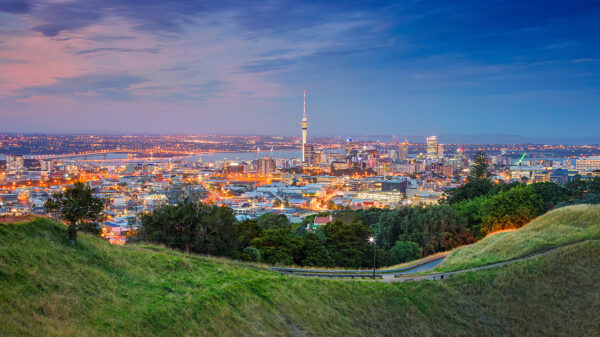Strong international commodity prices and defiantly buoyant domestic economy – despite repeated interest rate hikes and continued talk of slowdown – have joined forces to lift the combined revenue of New Zealand’s Top 200 companies by solid 7.34 percent this year. In total, the businesses collected $134.9 billion, an increase from last year’s group which had combined revenue of $125.7 billion.
Collective profitability for the Top 200 of 2007, when compared with the 200 in 2006, was up an impressive 47 percent to $9.3 billion. In 2006 the combined profits came to $6.3 billion. There will always be anomalies when comparing that many financial results, but one does stand out as needing special early mention this year: Telecom’s 2007 profit includes $2.1 billion gain on the sale from the Yellow Pages. Remove Telecom’s figures from both years (Telecom had loss in 2006) from the equation and 2007 combined profitability falls to $6.3 billion – 7.2 percent dip on the 2006 companies.
Bear in mind that two different groups of companies are being compared – the 2006 group which made up the Top 200 companies and the ones which comprise this year’s Top 200 – but it does illustrate the huge impact the largest companies in New Zealand have. Further analysis shows that the top 10 companies in the Top 200 list account for 37 percent of total revenue, the top 20 for 50 percent and the top 100 for 70 percent.
Top performers
Fonterra retains its number one spot – by far the country’s largest business – while elsewhere in the top 10 minor reshuffles have seen the team remain the same with one exception. Foodstuffs South Island has moved up six places from last year, to join the leaders at number 10.
In 2006, Contact Energy moved into the top 10 following sharp increase in revenue. Revenues and profit have both fallen back in 2007 and Contact has accordingly moved down the list to number 13.
Market darling Fletcher Building pipped Telecom for the number two spot – but only just, with less than $60,000 separating their respective revenues. The company is finalist again this year in the Company of the Year category. Judges were impressed with the way the company operated with no hitches or slowdown during the often difficult process of transition to new chief executive. They said this highlighted the impeccable succession planning which must have taken place.
Collective profitability for the Top 200 of 2007 was up an impressive 25.5 percent to $9.3 billion. In 2006 the combined profits came to $7.4 billion.
Elsewhere on the list Infratil, up to 41 from ranking of 95 in 2006, has achieved this rise through acquisition. The infrastructure and utilities investor and manager increased its share in TrustPower and this year’s figures reflect the first full year of Stagecoach ownership. These purchases demonstrate the continuing success the 2007 Company of the Year has had in choosing investments and partners. The company, led by Executive of the Year Lloyd Morrison, exemplifies the ‘Step Beyond’ theme of this year’s Top 200 Awards event with its successful transfer of knowledge and management to overseas investments.
While the domestic economy juggernaut shows little signs of slowing, retailer Pumpkin Patch has seen its growth moderate. The clothing company is still moving up the list – but more slowly than previously. It sits at 89 this year after jump from 104 to 92 last year.
Lion Nathan and New Zealand Breweries stood out among those companies whose revenue fell this year – both dipping around 40 places – and this may have been due to the adoption of International Financial Reporting Standards.
Fonterra has by far the largest turnover of any company yet it records no profit, as its method of return is to pay farmers sum combining the cost of supply plus the profit the company has made from trading the products. That could change with the company’s proposal for partial float currently under consideration.
Full employment, high commodity prices, strong tourism and strong dollar are driving things along nicely according to commentators. Given all this, questions may well arise about the efficiency of the New Zealand economy. It pretty much has everything in its favour, yet the turnover and profit figures have not increased as might be expected. So if the economy is running pretty hard, it’s the lack of efficiency and productivity which is holding growth rates down.
Business stalwart Roderick Deane has consistently attributed our lacklustre economic performance to the latter – and he adds to the mix with strong attack on regulation and its hindering of business operation.
“All the widespread regulatory intrusion is wholly time consuming and complex. Our biggest problem is our regulatory environment,” he says. Deane also believes New Zealand’s corporate tax rates are too high, saying they leave our businesses in the “middle of the pack” and without the competitive advantage they once had.
“Economic growth is our number one priority and the things which are hindering that are our regulations and our tax rates,” Deane says.
So what do the country’s businesses have to look forward to as an economic environment?
Business and Economic Research (BERL) senior economist Ganesh Nana offers some comfort, saying he expects modest rates of growth over the next three years. He says the principal drivers of New Zealand’s recent economic growth remain present in forecasts, with the terms of trade boom continuing unabated and planned and committed infrastructure projects showing no signs of being shelved.
“There is however, the prospect of more sombre outlook if current financial turmoil does not settle. But the impact of global ‘credit crunch’ scenario should be neither overplayed, nor underplayed. It is the task of monetary authorities to ensure that the imprudent lending decisions of the relatively few do not infect the otherwise sound economic activities of the many,” Nana says.
Globally, financial market uncertainty will trim growth in the US and Europe, but expansion in China and India will contribute to continuing growth in world demand, he says.
Locally, climate change policies, and oil prices, will add to the uncertainties facing New Zealand businesses in the forthcoming year, according to Nana, who adds the drivers of New Zealand’s terms of trade boom (which are the developing world’s appetite for food, building materials and other commodities) are set to continue. “Those who see these as opportunities to reinvest and upgrade with leaner and meaner machinery and equipment stand to benefit in the longer term,” Nana says.
He believes that lifting New Zealand’s “anaemic” record of investment in machinery, equipment and buildings and in workforce skills and training will remain the key to long-term gains for New Zealand business and economic performance.
By way of example he cites that, housing aside, New Zealand has struggled to devote one-sixth of its annual income to investing in productive assets for the future. In 2005 the nation reinvested 17 percent of its income (or GDP), and this was the highest this reinvestment ratio has been for nearly 20 years. The 20-year average for New Zealand is just under 16 percent.
Nana compares this with Spain’s track record – in 2005 that country reinvested nearly 21 percent of its income and has 20-year average close to 19 percent – explaining that 20 years ago Spain was more than 25 percent below New Zealand on the income per head ladder.
“Now, Spain is all but on the same rung as us,” he says.
Another example he gives is South
Korea. Its 2005 reinvestment ratio was nearly 23.5 percent, while its 20-year average is over 26 percent. It hasn’t caught up with New Zealand on the income per head ladder but from over 60 percent lower than New Zealand 20 years ago, South Korea is now only 15 percent lower.
“That’s the wider macro picture, but it’s the same at the micro business level. In world where the work











